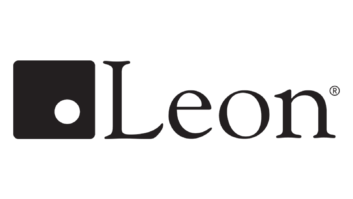
Picture This: 2005 In Review
Dec 1, 2005 12:00 PM,
By Jeff Sauer
And what the display industry promises for 2006.
As we turn the last page on the 2005 calendar, it’s an appropriate time to reflect on what’s occurred over the last year and to plan ahead for next year. In the video and display industries, that means taking stock of the new products and trends that have emerged during 2005 and what potential opportunities exist for 2006.
Sony SXRD
The main business question many AV contractors are likely to be asking themselves going into 2006 is what portion of their business should be commercial and what part residential. Naturally, the two involve very different methods of operation, strategies for attracting business, and client relations. For many systems integrators, who have so far focused solely on the commercial space, it’s getting harder to ignore the growth in the residential market, and the changes in market dynamics.
Equipment manufacturers, particularly flat panel and RPTV makers, are now focused on the consumer market first and the professional AV market second in terms of product development. That’s a function of the potential size of each market, and the evidence is in the success and growing importance of the tradeshows that serve the consumer market. CES is now the primary launchpad for new panel technology and the CEDIA trade show has grown too large for its long-term home in Indianapolis and will move to a larger city and larger facilities in Denver next year.
The Federal Communications Commission’s mandate for broadcasters to move toward digital television and the implied growth in HDTV is partly responsible, but so are the dramatically lower prices for HD-capable displays. Of course, lower prices means more commodity-based product selling, but the sheer size of the residential market and the still-steady level of new home construction make it a temptation for contractors.
An interesting side note to the rise in consumer adoption of HDTVs, which also affects pro AV, is the effective revival of both plasma and LCoS (Liquid Crystal on Silicon). A couple of years ago, the huge LCD industry looked like it might eventually render plasma obsolete as LCD panel sizes grew and video image quality increased. However, even against today’s larger LCD panels, plasma retains an image-quality advantage in most cases and significantly lower prices, and the technology is continuing to improve. Most overtly, Panasonic has invested heavily both in the manufacturing and marketing of plasma in an effort to refute many of the lingering negative stereotypes of the technology. Lower plasma prices mean large flat panels are becoming increasingly affordable to consumers, and therefore they’re likely to be around for a while.
Companies such as Philips, Intel, and Hitachi dropped LCoS in 2004, and it seemed destined for the technology dustbin. However, with Canon, LG, Brillian, and, in particular, Sony picking up the banner, LCoS is now looking sharp indeed.

Firefly MZ
RESOLUTION REVOLUTION?
Another trend that’s been coming for a while, but clearly took hold in 2005, is the move toward higher native resolution. Several new displays now feature 1920×1080, or native 1080p. Texas Instruments released the first true 1080-capable DLP chips this past year. LCD makers like Epson have announced new LCD-based RPTVs that are expected to debut in 2006, and LCoS RPTVs and projectors are on the rise. Those trends are combining to make 1080p the premium-product standard.
Similarly, while XGA is still by far the most common front projector resolution, there is an increasing number of SXGA and SXGA+ models. That upward trend should continue in 2006. And while there are still many SVGA front projectors on the market as value models, the cost gap between SVGA and XGA imaging devices is decreasing. That should leave SVGA in little more than the most affordable models, including sub-$500 front projectors, which are likely to become more commonplace next year. Do those prices mean more consumer-oriented front projection? It probably means some modest growth, especially if RPTV pricing and quality continues to improve.
More attention was focused on digital signage in 2005, although there was not a lot in terms of new products. Will 2006 be the breakthrough year for digital signage? Lower prices on panels will help, but that’s only part of the equation. Digital signage authoring products and techniques still have to become more accessible for the technology to move beyond the early adopter stage. Focus Enhancements, Chyron, and ViewSonic have all taken initial stabs at invigorating the digital signage market with affordable, easy-to-use solutions, but the market is not ready for do-it-yourself digital signage. It still requires the expertise of an AV contractor, particularly one with content creation partnerships. I would expect those opportunities for knowledgeable contractors to grow dramatically in 2006.

Realta Chip
NEW PRODUCTS
The vast majority of new product introductions ultimately fall into the category of incremental improvements. Some of the more groundbreaking highlights of 2005 were Sony’s 4K-resolution, SXRD-based SRX-R105 and R110 projectors; Mitsubishi’s unique sub-1lb. Pocket Projector; and Brightside Technologies DR37-P, the first true High Dynamic Range monitor. Other companies are likely to introduce miniature projectors and HDR displays in 2006, but it will probably be another year before the true promise of those two new product segments can be assessed. Digital cinema is creeping ever closer, but it’s the business model more than the technology that needs resolution.
So, what products will be hot in 2006? Oppo Digital recently introduced a sub-$200 (street price) DVD player with built-in upconversion to high definition. It uses a Faroudja chipset. I expect the increasing technology competition between Faroudja and Silicon Optix’s Realta chip to beget several more such products with a focus on image quality, especially given the increasing affordability of HD monitors and TVs.
I also expect 2006 to be a breakout year for video over IP. This technology has been around for a while from such technology companies as VBrick Systems, but a new focus on applications is turning video over IP from technology into solutions. Such products as the Sonic Foundry’s Mediasite, Advanced Media Designs’ MediaPointe, and ViewSonic’s Media Gateway and Adapter, as well as the Avocent Emerge Media Streamer products (see my review of Emerge on p. 60) all leverage visual communications technology.
Distance learning and remote security monitoring are now well established video-over-IP uses. Admittedly, visual business communciations has been a long time coming, but it is now easier than ever before and should find a comfortable home in specific application like digital signage, videoconferencing, and remote or virtual meetings in a number of vertical markets. The companies or contractors that can package the technology to provide those specific solutions will be the ones that see the greatest opportunities in 2006.








